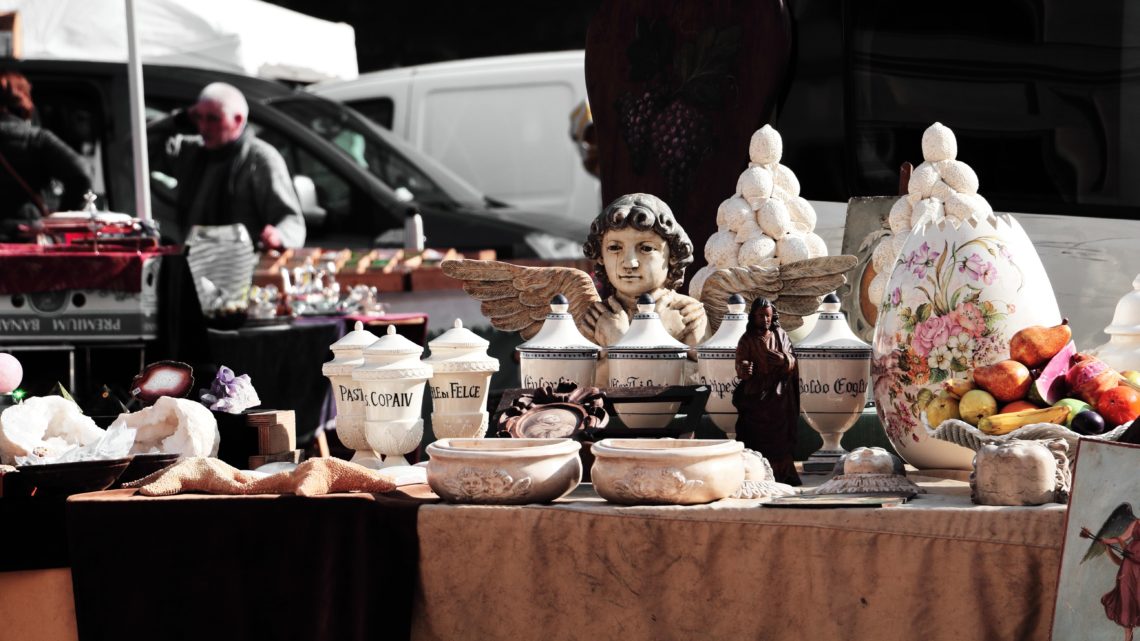My women friends – a.k.a., the Ladies of a Certain Age – are doing something we wish our parents had done.
About 15 years ago, my cousin, Joan, gave me some advice. Her mother, my Aunt Phyllis, had just passed away.
“Do your kids a favor,” Joan said. “Get rid of stuff before you die.” She was sorting through her mother’s possessions – things that Aunt Phyllis had acquired and kept for decades.
We, the LOACA, are divesting.
We’re getting rid of stuff. Stuff we don’t use. Stuff we don’t need. Stuff we’ll never dredge up or re-purpose or refurbish. Broken stuff, out-of-date, worn out, unfashionable stuff. Things we once treasured, but after we’re gone, they’re things that will be placed on wobbly borrowed card tables for a neighborhood garage sale.
This divesting craze has a trendy new name in the 21st Century: decluttering. It’s so “in” that a woman named Marie Kondo wrote a best-selling book about it called The Life-Changing Magic of Tidying Up.
I decluttered some basement closets by giving away several dozen ordinary glass vases – the kind that florists deliver flowers in. Nothing special. Why did I save these?
I also sorted through two dozen coffee mugs with cute phrases and elaborate logos stenciled on them. Gave half of them away.
I got rid of some raggedy T-shirts with writing on them – names of beaches, cities, schools and charitable organizations. I was saving these shirts for days when I “cleaned the basement” or “worked in the garden.”
How many T-shirts did I think I needed for these two chores?
“Do your kids a favor. Get rid of stuff before you die.”
My cousin, Joan
My parents grew up during the Depression when money was tight, and if you bought something, you took good care of it, repaired and cleaned it, and hung on to it forever. When you were finished using it, you stored it in your basement. They saved broken kitchen appliances. String. Glass jars – dozens of glass jars, all sizes and shapes, with lids that actually screwed on tightly.
“We might need this dented stove-top coffee percolator again,” they thought. “Let’s put it on a shelf in the basement in case our fancy new Mr. Coffee breaks down.”
My mother also saved rubber bands (which deteriorate within a few years and morph into boxes of disgusting stickiness). She saved used wrapping paper (smoothed nice and flat and trimmed), gift boxes, buttons, paper bags, plastic bags, ribbons, Life magazines and worn-thin-almost-till-you-can-see-through-them towels and sheets, even blankets. She washed and saved Styrofoam trays that meat is sold on.
I’m an only child, so it was up to me to sort through these treasures and decide what to do with them. I had no problem deciding the fate of the Styrofoam meat trays and rubber bands.
I kept the letters from my father to my mother, sent while they were engaged but living in different cities – he in Detroit at his new job as an art director, she in her hometown of Cincinnati, working as a secretary.
I’m taking Joan’s advice seriously. I did not keep two boxes of letters I received from my high school friends after we graduated and scattered all over the country attending colleges, working new jobs, getting married and having babies. There was no email back then. We kept in touch by snail mail. Those letters would have no meaning or value to my children after I’m gone.
I spent a few enjoyable evenings reading them, then I tossed them out. I divested.
I have been slogging through my basement storage area for stuff that I think my daughters will hold up for inspection and say, “Why in the world did she save this?” just as I did with my mother’s Styrofoam meat trays.
I put some of these items up for sale on eBay. Some sold. Some didn’t. About half of my divestitures found their way to donation boxes and are about to be picked up by the Vietnam Veterans of America. I like the VVA because they’re so good about keeping me informed of their collection schedule, because they are reliable (they collect on the exact day they say they will, rain or shine), and because they come right up to my front porch to get the stuff.
One of my high school girlfriends has a slightly different take on this divesting and decluttering craze.
“Just a darn minute,” she said. “We had to clean out our parents’ basements and attics, didn’t we? That’s what children do. Our children should do the same for us.”

ABOUT THE AUTHOR: Margie Reins Smith is a retired journalist, formerly assistant editor of The Grosse Pointe (Mich.) News. She’s now a freelance writer, a weekly blogger, a mahjong and pickleball player, a gardener and a traveler. She’s also a mother, grandmother and (yikes!) a great-grandmother. She doesn’t feel that old yet. Her blog is called The Newfangled Gramma. It’s updated every Monday morning and can be found at margiereinssmith.weebly.com
Main photo by Simone Pellegrini on unsplash.com





7 Comments
Connie
So you must have been reading my mind. I have been making many trips to the dump and Goodwill. Why do people save so much stuff? It’s the same old line: “Well, maybe I will need this someday, or this could be worth something.” Only to find out that all those wheat pennies you saved are really only worth a penny! Bye-bye, old stuff — maybe someone else wants to save it.
Jennifer John
Hey, Con, what do they say? One person’s trash is another’s treasure. Good to hear from you!
Thomas Adams
Hmmm? How do you handle “old junk” when your adult children bring their junk over and put it in your garage and basement?!😡❤️
Jennifer John
Tommy, what a nice surprise to see your comment. You might have to change the locks!🤣🌴☀️
mrmiller48
My mother started a tradition of gifting her “treasures” at Christmas. Now, I’m trying to re-gift them to my kids.
Jennifer John
Great idea, Bamz.😍
Cheryl Evola
Know what you mean. In sorting through my mother’s “stuff” we discovered that she had brought her boyfriend’s stuff from his first marriage into her house. WTH? After he passed and his son came to see Mom, he told her he didn’t want any of it. Neither did we! So don’t kid yourselves folks, that sweater you knitted with $300 worth of fine imported yarns will sell for 25 cents at your next garage sale. Or maybe not …